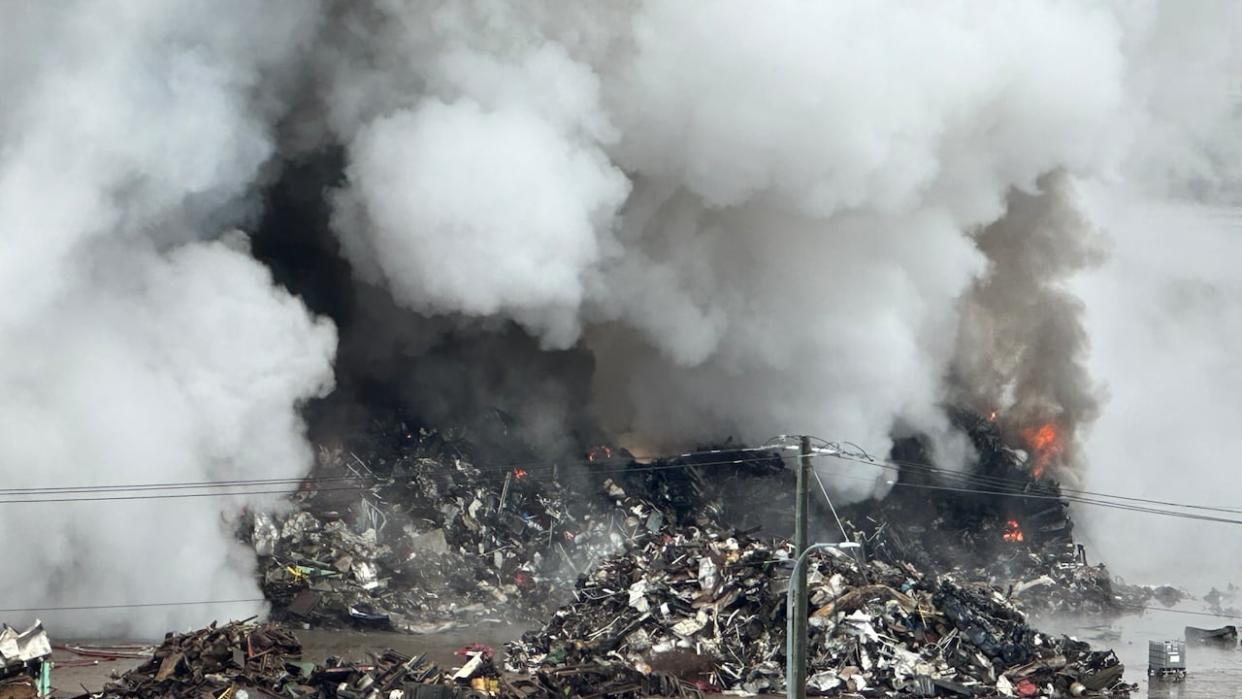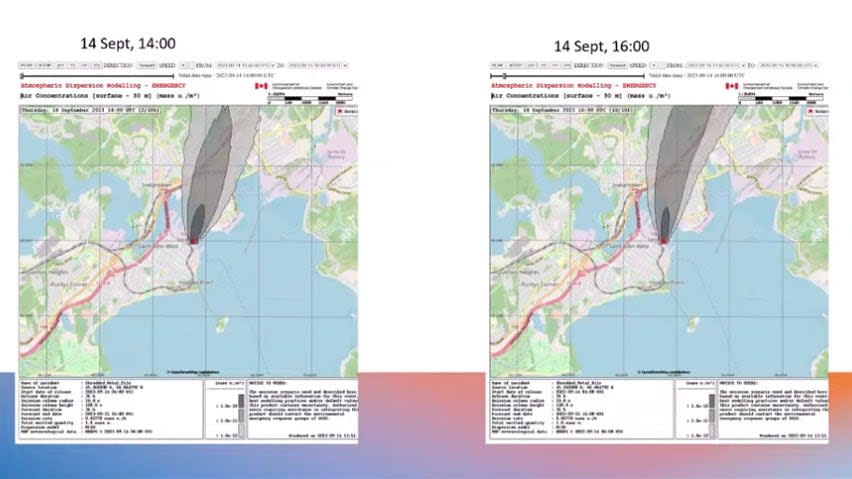4 Saint John soil sites tested after AIM fire show higher than expected levels of metals, chemicals

The Department of Health has updated its guidance on garden produce and cannabis that may have been exposed to smoke from the massive fire at American Iron and Metal's scrapyard three months ago in Saint John, after four of 12 soil sampling sites showed "higher than expected levels of metals or chemicals."
But health officials don't believe the elevated results are related to the AIM fire, according to Dr. Kimberly Barker, regional chief medical officer of health.
"While the AIM fire has likely impacted soil quality in the city, our findings do not suggest it has impacted soil to the point that it poses a risk to the health of citizens," she said in a statement.
According to the department "there are several possible explanations for the elevated results."
None have been provided, but a guide Public Health has developed on growing garden edibles in urban and industrial areas indicates soil in some communities naturally contains different levels of metals and chemical compounds. "Urban areas, in particular, may contain higher levels of soil pollutants due to heavy traffic and other sources of environmental pollutants such as local industrial activities," it says.
The four sites with elevated test results require further investigation, the department said.
Public Health also plans to review the report released Tuesday by the task force that examined the AIM fire to determine if further actions are required.
The fire, which started around 1:30 a.m. on Sept. 14 and burned for roughly 40 hours, prompted a city-wide shelter in place order because of hazardous smoke.
The exact cause and origin of the "catastrophic" fire was inconclusive, but Attorney General Ted Flemming, who was a member of the task force, said investigators believe the likely cause was related to rechargeable lithium ion batteries, which were found at the site.
AIM operations remain suspended while various federal and provincial departments and agencies review the task force's report.
'Equivalent of 10,000 car fires'
No information about the types or levels of metals and chemicals found in the soil samples tested has been released.
In a presentation to the city's public safety committee in October, Barker said the fire chief indicated the AIM fire "was probably the equivalent of 10,000 car fires," with the cars full of gas and tires still on.
So health officials, together with the consultants CBCL Engineering and Environmental Services, came up with a "large list" of metals and chemicals to test for, which included some carcinogens. Among the list: mercury and cyanide, polychlorinated biphenyls, dioxins and furans, volatile organic compounds and petroleum hydrocarbons.

Environment Canada atmospheric dispersion modelling maps illustrate how the AIM fire smoke plume shifted over time because of the wind. (City of Saint John/YouTube)
The identities of the four sites with the elevated readings have not been released either. But three of them were from areas within the smoke plume, while the other was from a location not affected by smoke, used for comparison.
Soil was tested at nine community gardens where there was smoke. Barker previously told the public safety committee these included:
Rainbow Park Community Garden.
Broncos Blooming Community Garden.
Carleton Community Garden.
Shamrock Park Community Garden.
Crescent Valley Community Gardens.
The Growing Place Community Garden and Greenhouse.
Greater Saint John Community Garden.
Courtney Bay Community Garden.
Saint John Regional Correctional Facility.
Three sites a similar distance from the scrapyard, but not affected by smoke, were also tested as control sites to determine what chemicals might have already been in the soil before the fire: Centre scholaire Samuel-de-Champlain field, Dannell Drive and Harbour View High School.
"Most of the results were within the range of what would be considered typical for soil in that part of the province," the department said.
"However, four of the 12 sites had one or more test results with higher-than-expected levels of metals or chemicals."
Precautionary recommendations
As a precautionary measure, the department said anyone with produce from a garden that may have been exposed to smoke at the time of the fire should consider the following recommendations:
1. Crops that grow underground, such as potatoes, carrots, onions and garlic, should be peeled and washed before using.
2. Vegetables and fruits with smooth surfaces that are grown above ground, such as tomatoes and apples, should be thoroughly washed before consumption.
3. Vegetables such as leafy greens and asparagus, and any vegetable that cannot be thoroughly washed, should be discarded through the regular household garbage and not through compost.
4. Cannabis plants that have evidence of soot or other fallout from the fire "would be safest not to consume," the department said. These can also be disposed of through the regular household garbage and not through compost.
Until now, officials had advised people to either wash and freeze their garden harvest, or throw it out.
Barker previously told the city's public safety committee that if test results found the community gardens were contaminated, the soil would probably need to be replaced — although who would foot the bill was unclear.
Additional sampling of the gardens as well as the city's compost might also be required, she had said, since compost collection from homes within the plume area has continued as usual.
If chemicals were detected at the control sites, "then that's a larger discussion for the city and those at senior levels of government to decide on the steps going forward," Barker had said.
Gardening guide for urban, industrial areas
Some plants may absorb contaminants from the soil, while pollutants can also deposit on the leaves and other surfaces of some plants, which can then be ingested, according to the department's gardening guide.
Still, growing an edible garden in urban and industrial areas is possible, it says.
"Research shows that when proper steps are taken, there is little health risk from eating plants grown in potentially polluted soil unless levels are extremely high."
In industrial areas, it's best to use raised garden beds built with untreated lumber, lined with a layer of landscape fabric or organic matter, and filled with high-quality "clean" commercial soil, the department advises.
Plants that bear fruit, such as tomatoes, apples, squash, and berries, are advised for potentially polluted soil, as the edible part is less likely to have direct contact with the soil and will also be the last part of the plant to absorb pollutants.
Root vegetables, such as onions and garlic, are "the least appropriate," as the edible part has direct contact with the soil. Leafy greens, meanwhile, require careful washing after outer leaves are removed, it says.


